AS SEEN IN





Home » How the sound of a curlew calling led to two new paintings
The unmistakable sound of a curlew’’s call rings out across the Yorkshire Wolds and moors brightens up the dullest of days. These waders come in from the coastal mudflats to raise their young over the summer months. Their arrival in spring is spectacular. The males circle the valleys, surveying their new territory and calling with a crescendo of notes as they rise steeply into the air with rapid wing beats before gracefully gliding back down with quivering wings.
One summer I photographed a curlew on its nest whilst its eggs hatched. I found the nest as I was driving up a valley not far from my gallery in Thixendale. A curlew suddenly flew out of a grass tussock in front of me. Given the time of year, I knew this could only indicate one thing and so I stopped to check it out. There, hidden in a shallow depression lined with grass, and surrounded by tall grasses that made it almost invisible from just a metre away, was the curlew’s nest.
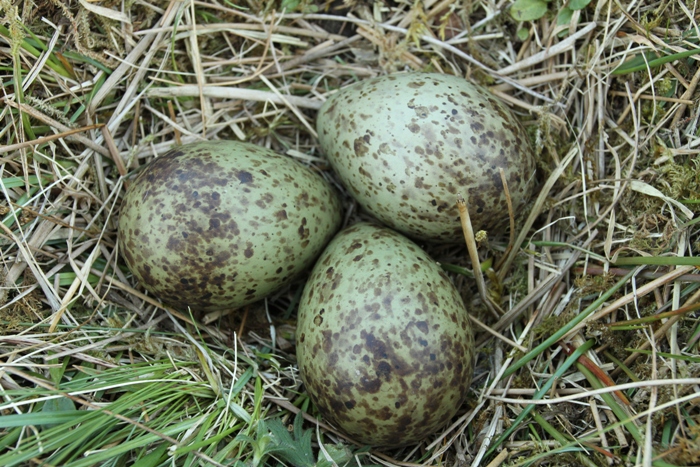
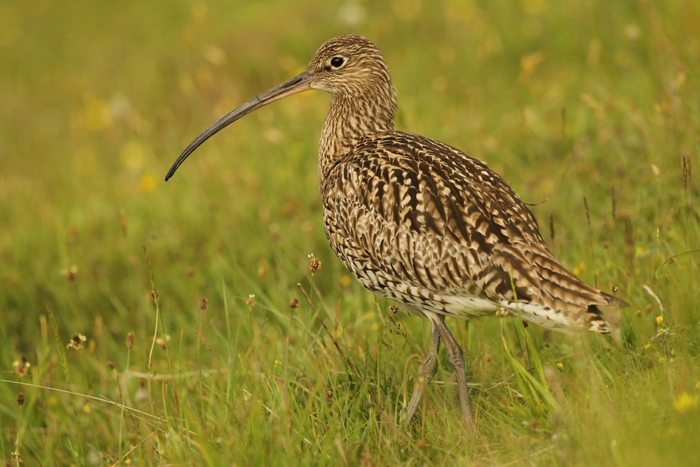
In it were three large exquisite pale green eggs with dark brown blotches. The next day I began building a hide close to the nest. I built it very gradually, adding a new piece to my construction each day so that the pair had plenty of time to get used to it. It is important to be especially cautious when birds are incubating eggs so that the eggs are not abandoned. This female was particularly wary. Given the lateness of the brood, I suspect it was her second attempt of the season and that the first had been predated.
As I arrived one evening to add the final section to the hide, I noticed that the eggs had just hatched. The chicks were still wet, and the last egg was chipping. My timing was immaculate. I quickly finished the final bits of construction and planned an early start the following morning. It was surprisingly chilly in the hide at 6am even though it was June. The curlew flew the nest as I approached, but was back on before I could get my cameras set up.
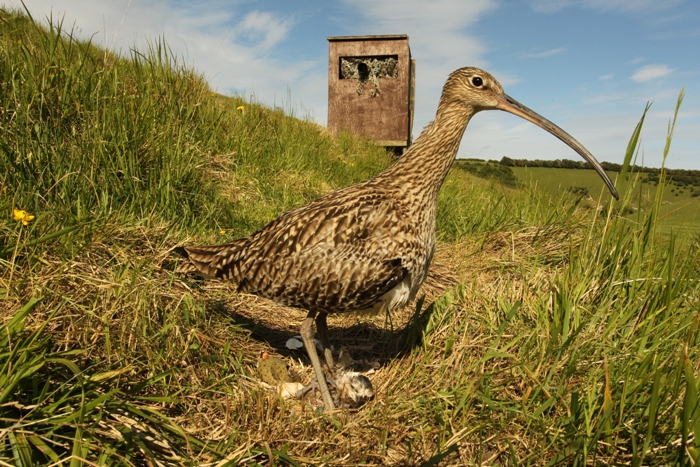
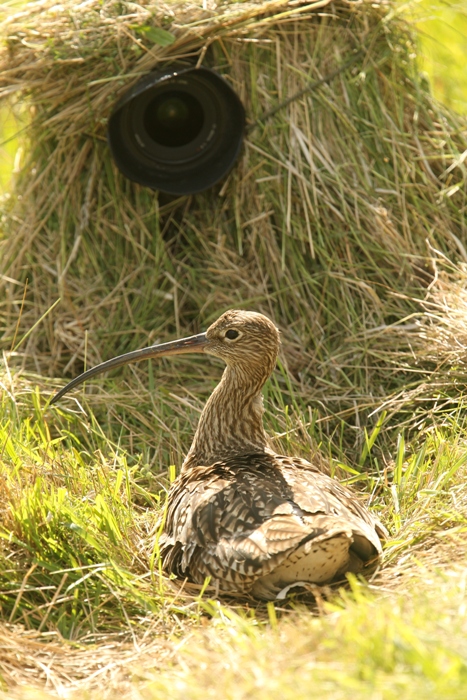
As the sun got higher in the sky, the valley started to warm up and the two recently hatched chicks became more adventurous. They went off on a foraging mission, pecking anything that moved. This spirit of adventure made the female extremely anxious and she made constant contact calls to her young. If they strayed too far she would leave the nest and encourage them back. They eventually did as they were told, returning under her for warmth and safety, and presumably sleep. But after a short half an hour nap, they were off again in search of more insects.
It was fascinating to watch this new curlew family from just eight metres away. I knew the female was not disturbed by my presence when she rose from the nest and strode purposefully towards the hide until she was just three metres away. Then, ‘snap’, she gobbled a large green grasshopper from a long arching stem before returning to her nest. The male meanwhile stood guard a short distance away, warning the female of any approaching danger.
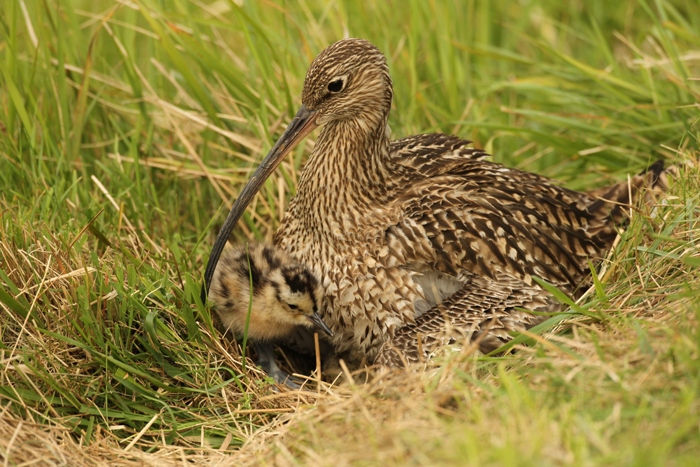
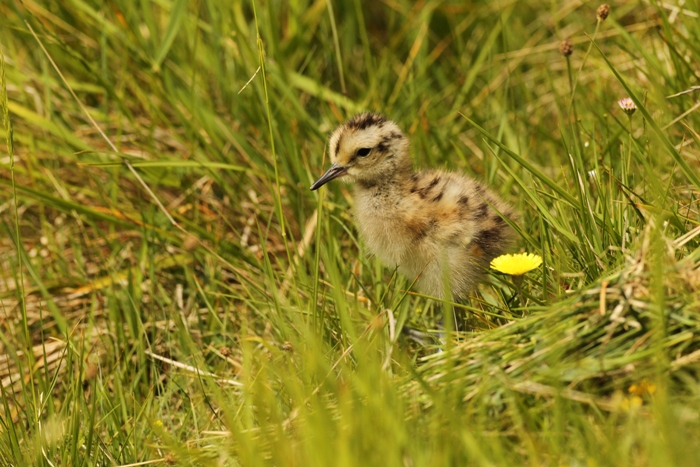
As I spent time in the hide, I began to get an idea of what they were up against. In the course of just one day, the male saw off several potential threats. First he took on a pair of carrion crows. Curlews are powerful flyers and can outmanoeuvre a crow. The male managed to fly above the pair and crash down onto their backs. Then a kestrel hovered uncomfortably close. Kestrels mainly eat rodents, but would not pass up on the opportunity of an unguarded chick. The female hurriedly called the chicks in and pushed them under her body with her long, curved bill.
Next an alarm call from the male announced a pair of buzzards overhead. Buzzards would not tackle an adult curlew but the chicks would make a convenient snack. After this a flock of 20 rooks flew in. The adult rooks started foraging nearby for leather jackets which they feed to their young. Rooks aren’t known for eating eggs or chicks, but the male curlew knew better than to trust a corvid. He rushed over their heads calling aggressively and quickly sent the rooks scattering. These rooks were soon followed by a pair of pheasants. The cock pheasant was all fluffed up, showing off to the hen.
As far as I know the pheasant posed no threat to this new family, but the male curlew targeted him nevertheless, flying up behind him at low level before letting out a screech at the last moment and smacking him right in the backside. The cock pheasant fled down the dale in shock. He was horrified, especially so since the hen had observed this dressing down. But he couldn’t shake off the male curlew, which piggybacked him, while pecking him on his head, all the way. Imagine his horror at being seen off by a mere wader when it is usually only more lofty birds of prey that target him? The cock pheasant composed himself and in an attempt to regain some dignity flew back across the valley to rejoin his mate.
But this time both male and female curlew turned on him. The cock tried to stand his ground and sparred back his tail, flashing up into the air, but the curlews were not standing for any nonsense and he had no choice but to turn and flee once more.The hen meanwhile remained unimpressed throughout, especially as the curlew largely ignored her presence. I presume the dressing down marked the end of this relationship. By this time it was 6pm, I had been in the hide for 12 hours and my stomach was telling me it was time to head home. It had been a great day gaining an insight into the family of curlews and seeing how they had to struggle to keep their young ones safe.
The experience led to the following paintings:
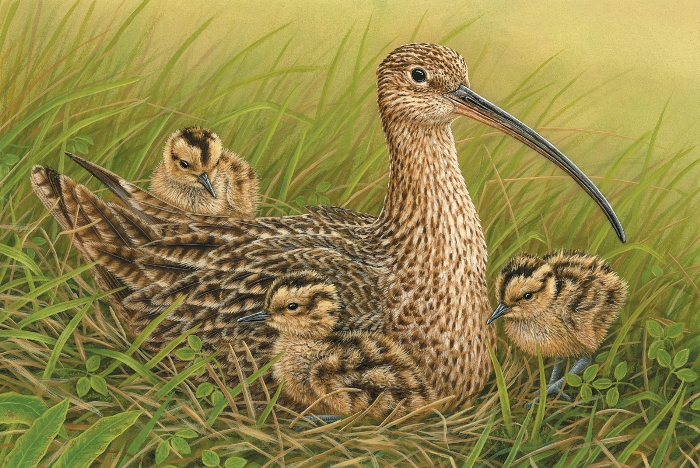

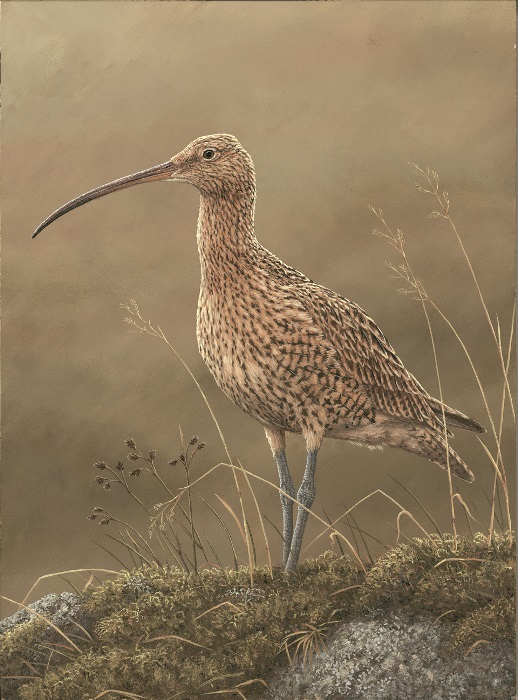 Curlew | Limited Edition Print | Available Here
Curlew | Limited Edition Print | Available Here
Sign up to my newsletter for updates on news, wildlife sightings, products and more directly to your inbox
AS SEEN IN





THE ROBERT FULLER GALLERY
FOTHERDALE FARM
THIXENDALE, MALTON
YO17 9LS
UNITED KINGDOM
TEL: +44 (0) 1759 368355
EMAIL: mail@robertefuller.com
6 Responses
Gorgeous paintings and wonderful photos,your blog is extremely interesting and educational thanks.